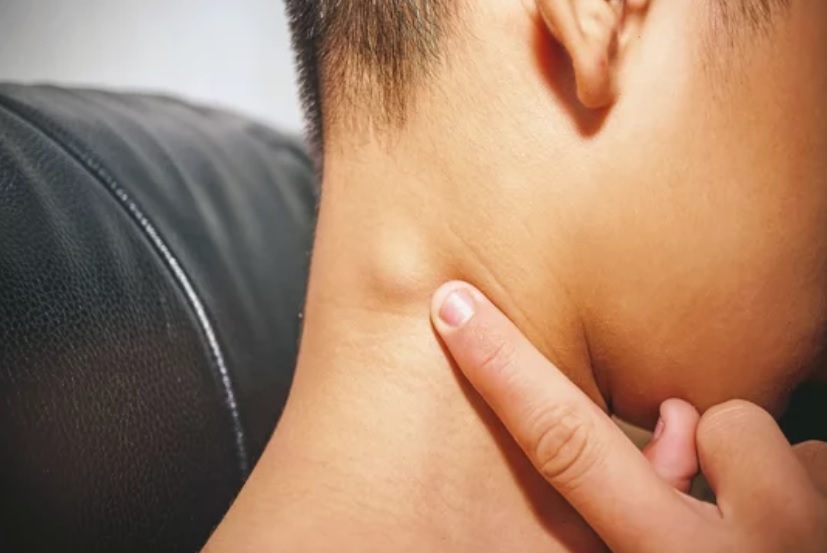INTRODUCTION:-
Our body generally consists of two sets of circulatory systems.
They are –
- Blood vessels – contains and transport blood throughout the body.
- Lymph vessels – contain and transport lymph throughout the body.
Talking about the lymphatic system, it is a set of vessels that carry a transparent or white fluid in them that is transported throughout the body until it reaches the blood vessels, where it is finally poured out.
When the cells are provided with nutrition through the blood, they consume it and, in return, release some waste. Some part of this waste seeps into the capillaries, whereas most of it is collected by the lymph vessels. Like this, it maintains the fluid balance in the body. The collected fluid is finally poured into the bloodstream, where it continues circulation. Apart from that, it also contains WBC, which acts to kill bacteria and provide immunity.
These lymph vessels have junctions where two or more lymph vessels meet at a circular structure called the lymph node. This lymph node consists of B and T cells that produce WBC to kill the bacteria in the lymphatic fluid and filter them. After purifying the fluid, it is let out through a common outlet vessel. Such lymph nodes are present at regular junctions throughout the lymphatic system of our body, like in the—
- Armpits
- Under the jaw
- Above the collarbone
- On either side of the neck
- On either side of the groin
Due to an infection or any other reason, the lymph nodes get swollen and accumulate bacteria that cause diseases.
CAUSES FOR LYMPH NODE SWELLING:-
Infections:-
Swelling of lymph nodes at regions of neck and head could be due to,
- Ear infection
- Sinus infection
- Flu
- Streptococcus throat infection
- Virus infections like mononucleosis
- Tooth infection
- Skin infection
- HIV
- Cat scratch fever (bacterial infection)
- Tonsils
- Toxoplasmosis (a parasitic infection)
- Tuberculosis (a bacterial disease)
- Shingles (skin disease)
Swelling of lymph nodes at the groin area could be due to,
- Sexually transmitted diseases like syphilis or gonorrhea
Noninfectious causes:-
Other causes for swelling that do not include any bacteria in particular are,
- Other cancers spread to the nearest lymph node.
- Lymphoma is cancer of the lymphatic system only.
- Autoimmune diseases like lupus and rheumatoid arthritis.
Other causes:-
- Allergies
- Stress
- Mouth ulcers
- Gingivitis (gum disease)
- Hodgkin’s lymphoma (group of blood cancer)
- Non-Hodgkin’s lymphoma (group of lymph cancer)
- Cutaneous T-cell lymphoma
SYMPTOMS:-
- Coughing
- Fatigue
- Fever
- Profoundchills
- Runny nose
- Sweating
- Small lumps that range from the size of a pea to that of a cherry
- Pain is felt when touched or while chewing
- Tender or hard lymph
When you site such symptoms, and if they prolong for a few days, then it is recommended to see the doctor at the earliest, who will first go for a diagnosis and then treatment.
DIAGNOSIS:-
Physical examination:-
- Touched to see if they were hard or tender
- The size of the swollen lymph is measured
Diagnostic examination:-
- Blood tests
- X-ray
- Ultrasound
- CT scans
- MRI
- Biopsy
These tests help identify the bacteria that lead to swelling in case of infections. If otherwise, the kind of disease associated with the swelling can be recognized and treated further.
Here, the pus or fluid inside the lymph is cultured in labs and studied to check for cancer cells’ presence.
TREATMENT:-
- It is observed for a few days as the swelling might reduce automatically in some cases.
- If it does not reduce, then certain antibiotics are prescribed by the doctor as per the cause of the swelling.
Examples of antibiotics:- (a)Acetaminophen, (b) Tylenol, (c)Ibuprofen
These help in reducing pain and swelling.
- If the swelling is caused due to cancer, then once the cancer is treated, the swelling automatically subsidies.
- This cancer treatment depends on the region at which cancer has attacked. A few methods are surgical removal or chemotherapy.
PREVENTION:-
Avoid infections by,
- Maintaining your dental hygiene, that is, brush twice a day (morning and night)
- Wash your hands frequently
- Avoid sharing food, drinks, towel, or any other items in common with the infected person
- Prior vaccination for tuberculosis, shingles, flu, and so on
- Avoid cat bites, scratches, or licks
Avoid non-infectious causes by,
- Using condoms or other barriers during sexual activity to avoid sexually transmitted diseases
- Check for hypersensitivity towards a medicine before consuming it.
THANK YOU
MEDICAL ADVICE DISCLAIMER:
This blog, including information, content, references, and opinions, is for informational purposes only.
The Author does not provide any medical advice on this platform.
Viewing, accessing, or reading this blog does not establish any doctor-patient relationship.
The information provided in this blog does not replace the services and opinions of a qualified medical professional who examines you and then prescribes medicines.
And if you have any questions of medical nature, please refer to your doctor or qualified medical personnel for evaluation and management at a clinic/hospital near you.
The content provided in this blog represents the Author’s own interpretation of research articles.
